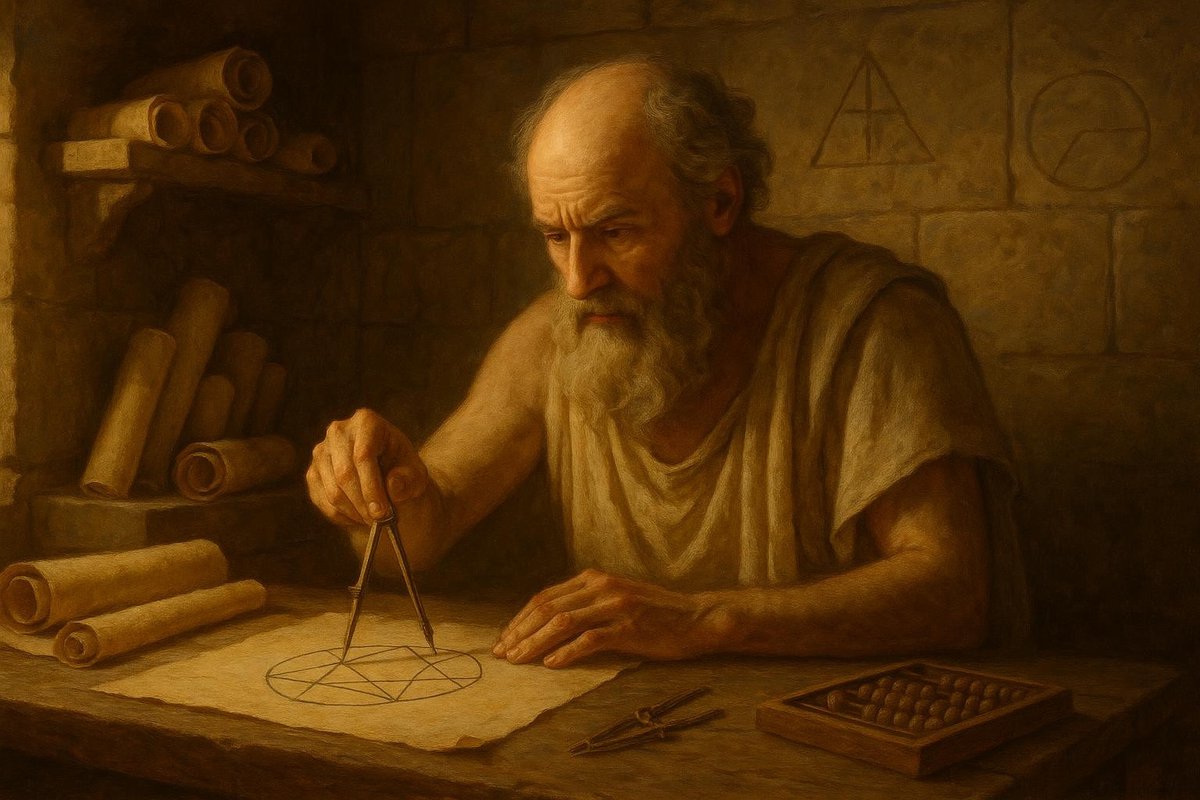
Imagine standing on the banks of the Nile, watching as the river flowed seamlessly in a winding arc. You may have wondered, as ancient mathematicians did, how to measure the world with precision. This quest for understanding led to the discovery of one of the most famous numbers in the history of mathematics: Pi. Let’s embark on a journey to uncover how human curiosity unraveled this mathematical marvel.
The Problem Context: A Circle’s Perplexing Nature
Before Pi was a twitch in the mathematical eye, the ancient world was puzzled by the circle. How could something so perfect refuse to reveal its secrets with ease? The enigma lay in measuring the circumference. Many people believed that there must be a simple ratio to describe this relationship, but the circle kept its mystery close to its chest.
- Imagine trying to wrap a rope around a wheel to determine its perimeter. The result seemed elusive.
- Ancient Egypt and Babylon were among the first to estimate Pi, using approximations like 3.125 and 3.16.
- Yet, these civilizations laid the groundwork for deeper exploration.
Interestingly, it was the Greeks who would dive deeper. As time goes on, the thirst to unlock the circle’s secrets grew more intense, seeding the mathematical fields with endless curiosity.
Theoretical Breakthrough: Archimedes’ Ingenious Pursuit
It was Archimedes of Syracuse, a Greek mathematician living in the 3rd century BCE, who would take a quantum leap. He challenged the boundaries of knowledge with a method as revolutionary as his other inventions.
- Archimedes used polygons to approximate the circle, pushing geometry to new heights.
- He ingeniously inscribed and circumscribed polygons to squeeze the circle between known perimeters.
- This approach estimated Pi with remarkable accuracy, between 3.1408 and 3.1429.
Of course, Archimedes did not have our modern tools, but with sheer brilliance, he illuminated the path for future generations. No wonder his work echoes through the ages, proving the power of human curiosity and intellect.
Supporting Evidence: Building on Ancient Foundations
Archimedes laid the stones, but the pyramid of understanding Pi reached higher with the contributions of others across centuries.
- In the 5th century AD, Chinese mathematician Zu Chongzhi calculated Pi even more precisely, demonstrating the global allure of this quest.
- The Indian mathematician Aryabhata’s works further advanced the approximation techniques.
- The 17th century saw the advent of calculus, with mathematicians like Isaac Newton refining Pi’s calculation.
Calculating Pi became a mathematical rite of passage, a journey all great minds seemed destined to pursue. The puzzle was not just mathematical—it was cultural, a testament to humanity’s relentless search for truth.
Modern Relevance: Pi in the Digital World
Fast forward to today, where Pi finds itself at the heart of technological advancements. From engineering marvels to computer algorithms, Pi is omnipresent.
- In the digital realm, computers have calculated Pi to trillions of digits, a modern curiosity without end.
- Engineers and scientists use Pi in designing everything from bridges to spacecraft.
- Even artists and musicians find inspiration in the symphony of numbers Pi presents.
Interestingly, Pi remains a symbol of infinity, a constant companion in our exploration of the universe. As humanity pushes the boundaries of existence, the lessons of curiosity and discovery remain as pertinent as ever.
As we reflect on the journey of Pi, we see an evolution of thought driven by unquenchable curiosity. The persistence of those who came before us shines brightly, urging us to continue questioning and exploring the world around us. Their mindset reminds us that every question is a stepping stone to deeper understanding.
Fuel Someone Else’s Curiosity
Feel inspired by the tale of Pi? Share this story with someone who might find the mystery as captivating as you do. Discuss, debate, and delve into discussions that spark curiosity. After all, the spirit of inquiry is a gift to be shared. Keep asking questions, and let the journey of discovery continue!

Leave a Reply